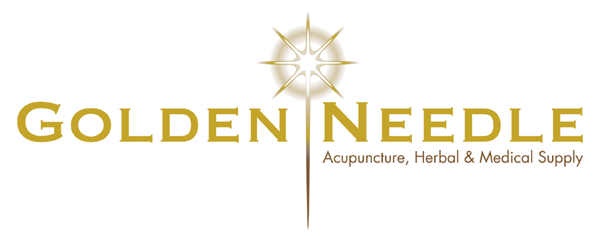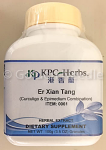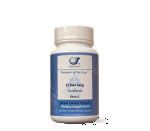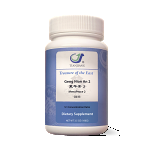Two Immortals (1 oz)
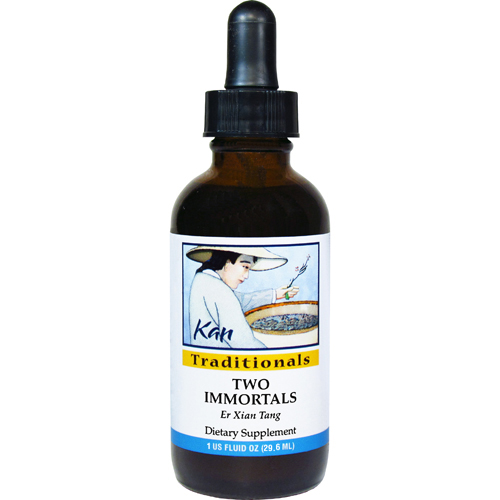
Two Immortals (1 oz)
| SKU | KT147-1 | |
| Brand | Kan Traditionals | |
| Unit Size | 1 fl oz | |
| Dosage | 16-48 drops, 2-3 times per day. | |
| Potency | 7:1 | |
| Properties | Soothes menopausal symptoms. | |
| Chinese Symptomology | Menopausal complaints. Hypertension. Night sweats, hysteria, depression. Fatigue. Irritability. Insomnia, Palpitations. Urinary tract infections | |
| Actions | Warms the Kidney Yang, nourishes Jing/Essence, drains vacuous Kidney Fire and regulates the Chong and Ren channels | |
| Pattern | Kidney Yin and Yang vacuity with vacuous Fire ascending | |
| Tongue | Light red or pale, variable | |
| Pulse | Thready, rapid | |
| Chinese name | Er Xian Tang | |
| English name | Two Immortals | |
| Description | Two Immortals focuses on the syndrome of menopause in which there is the pattern of Kidney Yin and Yang vacuity with ascending Fire. According to the Nei Jing, the Kidney Qi declines when the menses cease, as the Kidney Essence is no longer adequate to produce ovum or menstrual fluids. At the same time, the Chong and Ren vessels lose their substance, causing the menses to become erratic and to finally cease. Due to the combination of vacuity of both the Kidney Yin and Yang and the flaring up of Fire from vacuity, a complicated pattern of disharmony can result. The patient may suffer from hot and cold sweats, flushing, emotional instability, insomnia, hypertension and an alternating mix of vacuity and repletion as part of the overall pattern. This prescription is quite unique because it combines herbs that strengthen the Yang, nourish the Yin and drain Fire and also has the special function of replenishing the Essence and Blood. Traditionally this formula was used to treat menopausal hypertension, but in later years it was used to treat other chronic disorders with teh pattern of Kidney vacuity and ascending Fire, such as amenorrhea, nephritis, schizophrenia during menopause and pyelonephritis.* |
|
| Ingredients | xian mao (curculigo rhizome) yin yang huo (epimedium herb) ba ji tian (morinda root) dang gui shen (dong quai root) huang bai (phellodendron bark) zhi mu (anemarrhena rhizome) Other Ingredients: Water, Alcohol |
|
